A Guide To Glove Safety: EN 374
Working with chemicals is very high risk, which means that you need to make sure that you buy the right pair of chemical-resistant gloves. Chemical-resistant gloves are tested to a standard called EN 374, a standard that informs the wearer about what chemicals the gloves are designed for use with and for how long. This guide will provide the details of EN 374, helping you to purchase your right pair of Chemical-Resistant Gloves.
Back to Basics: What Is EN 374?
EN 374 is a chemical-resistant glove standard that was last modified in 2016. It has wide scope, testing a glove's response to a wide range of chemicals while taking into account permeability, breakthrough time, shrinkage and more. The standard is divided in five sections which can be viewed below:
- EN 374 - 1: Protective Gloves Against Chemicals and Micro-Organisms
- EN 374 - 2: Determination to Resistance to Penetration
- EN 374 - 3: Determination of Resistance to Permeation by Chemicals (replaced by EN 16523)
- EN 374 - 4: Determination of Resistance to Degradation by Chemicals
- EN 374 - 5: Terminology and Performance Requirements for Micro-Organism Risks
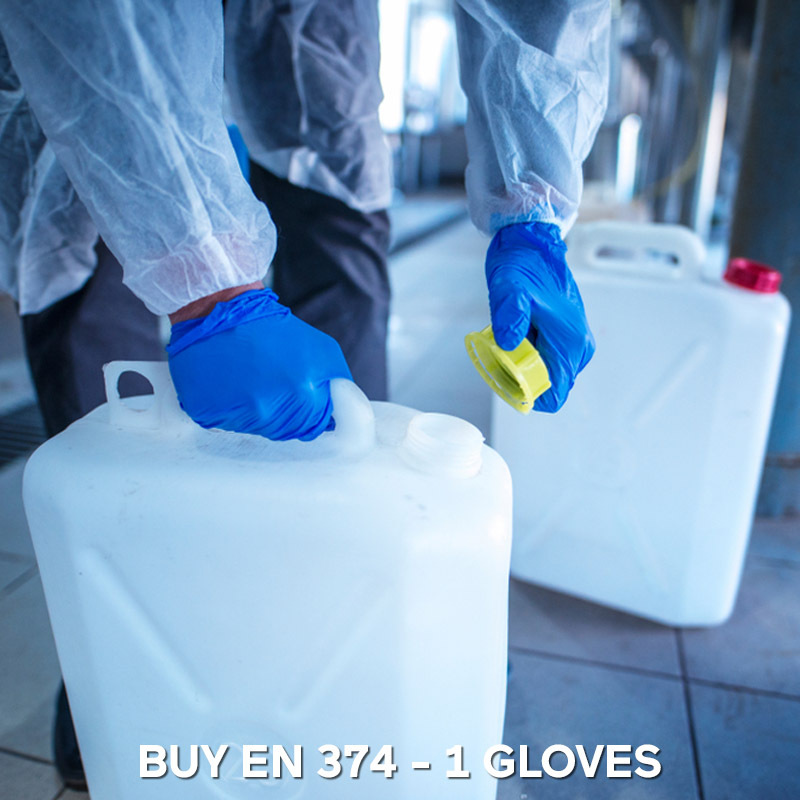 | 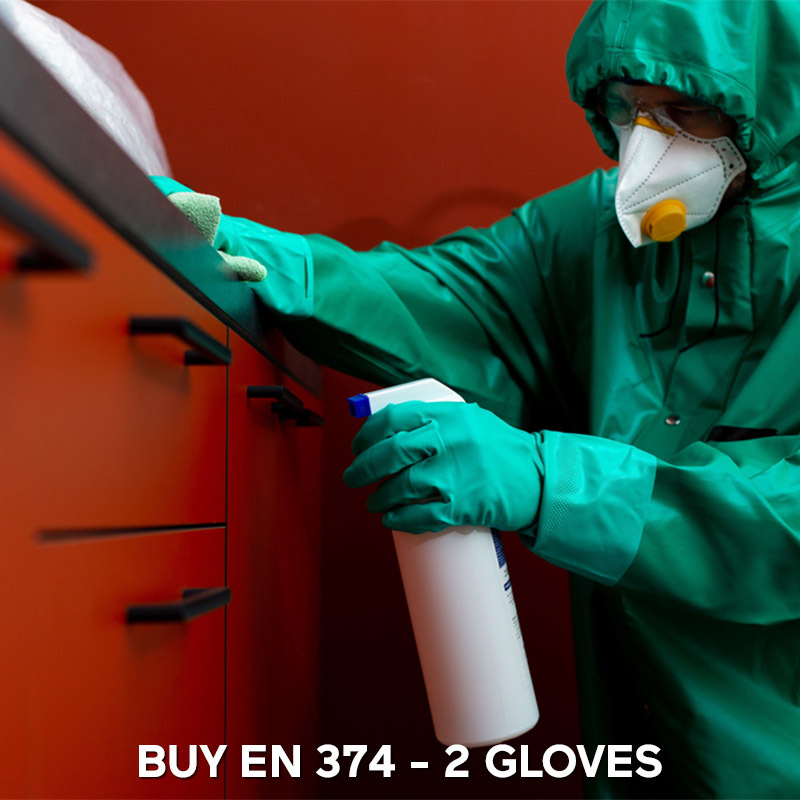 | 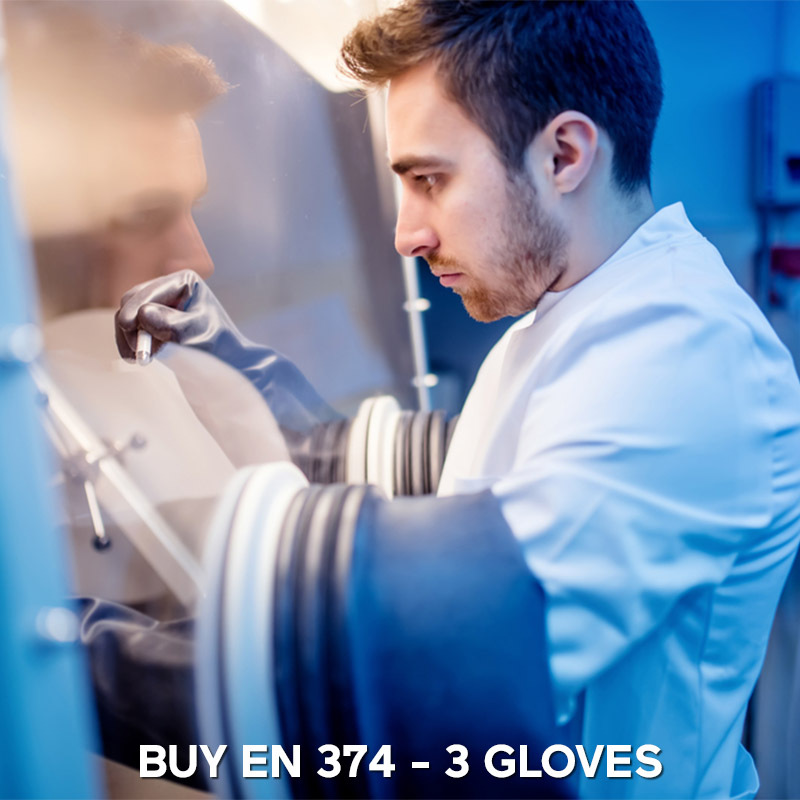 | 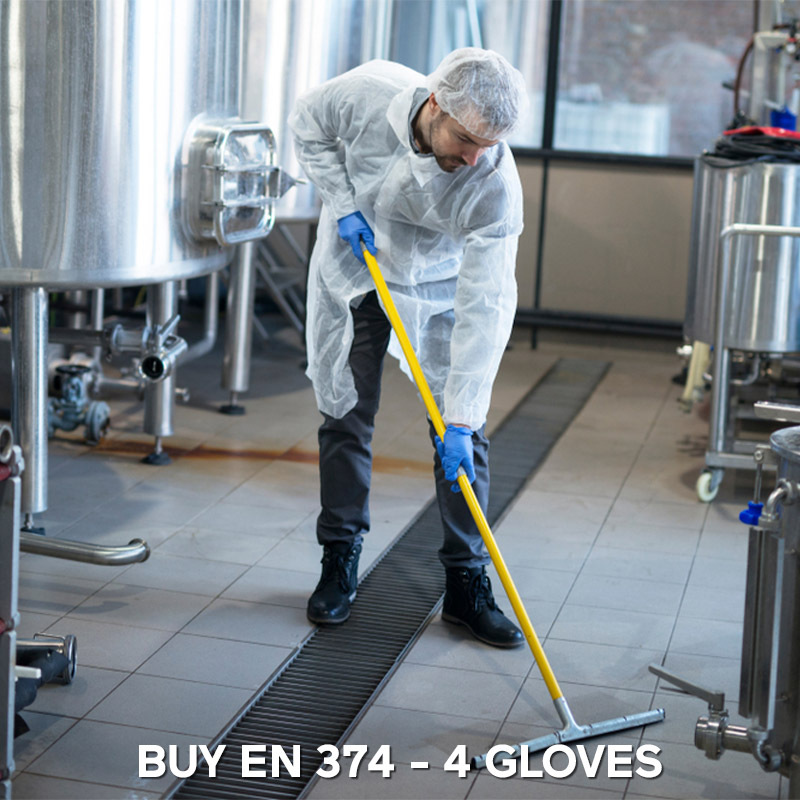 | 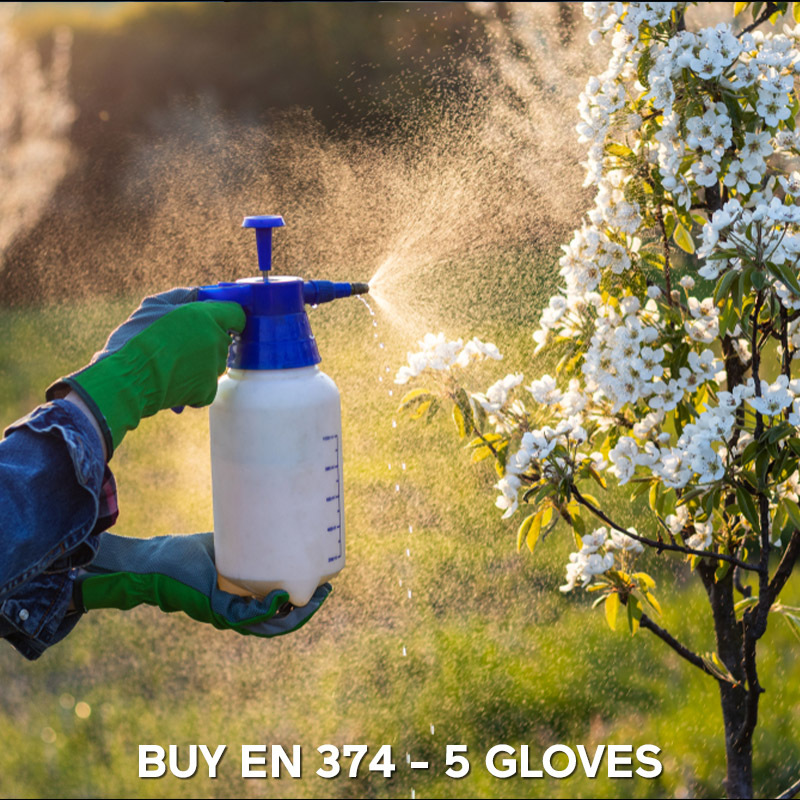 |
| Buy EN 374 Gloves |
In the next section we go into each section in further detail. We describe the details of each point and why each section is important for you.
SPECIFICATIONS: WHAT WILL AN EN 374 GLOVE ACHIEVE?
Your chemical-resistant glove can be awarded any from EN 374 - 1, 2, 3, 4 and 5. You can view each section in detail below:
EN 374 -1:
Protective Gloves Against Chemicals and Micro-Organisms
Most chemical resistant gloves will be tested to EN 374 - 1. EN 374 - 1 will test your gloves to a total of 18 different chemicals before awarding them with a certification of either A, B or C depending on how resistant the glove is to chemicals. Finally, this standard also includes a logo that quickly informs the user of which chemicals the glove can be used with.
Firstly, the gloves will feature a logo on their back that includes the Type and the chemicals that you can use the glove with. The letters correlate to a chemical that can be identified in the table below the logo. Finally, the type corresponds to the information below the chemical table.
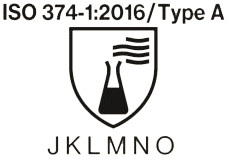
Logo Informing the Chemical Properties of a Glove
| Chemical | Code Letter |
|---|---|
| Methanol | A |
| Acetone | B |
| Acetonitrile | C |
| Dichloromethane | D |
| Carbon Disulphide | E |
| Toluene | F |
| Diethylamine | G |
| Tetrahydrofuran | H |
| Ethyl Acetate | I |
| n-Heptane | J |
| Sodium Hydroxide 40% | K |
| Sulphuric Acid 96% | L |
| Nitric Acid 65% | M |
| Acetic Acid 99% | N |
| Ammonoim Hydroxide 25% | O |
| Hydrogen Peroxide 30% | P |
| Hydroflouric Acid 60% | S |
| Formaldehyde | T |
- Type A: Protective glove with permeation resistance of at least 30 minutes with at least six test chemicals
- Type B: Protective glove with permeation resistance of at least 30 minutes with at least three test chemicals
- Type C: Protective glove with permeation resistance of at least 10 minutes with at least one test chemical
| Buy EN 374-1 Gloves |
EN 374 -2:
Protective Gloves Against Chemicals and Micro-Organisms Determination to Resistance to Penetration
EN 374 - 2 can be identified by the standard below. It is designed to determine a gloves resistance to penetration by chemicals, something that is identified by testing the gloves to leakage when air and water is pressed through the gloves. The gloves are inner-pressured, filled with air or water before being measured for leakage afterwards.
Under EN 374 - 2 a glove can achieve three different results:
- EN 374 - 2: 1 - Waterproof
- EN 374 - 2: 2 - Waterproof / Micro-Organism Resistant
- EN 374 - 2: 3 - Waterproof / Micro-Organisms Resistant

A glove will show this symbol if it is resistant to water and air leakage
| Buy EN 374-2 Gloves |
EN 374 -3:
Protective Gloves Against Chemicals and Micro-Organisms: Determination of Resistance to Permeation by Chemicals
EN 374 - 3 has been replaced by EN 16523-1.
| Buy EN 374-3 Gloves |
EN 374 -4:
Protective Gloves Against Chemicals and Micro-Organisms: Determination of Resistance to Degradation by Chemicals
EN 374 - 4 is designed to take into account how long it will take for a glove to degrade. Degrading can be caused by:
- Degradation (Change in a glove material)
- Degradation can cause brittelness, swelling or shrinkage
- A standardised measurement method for degradation for the first time
| Buy EN 374-4 Gloves |
EN 374 -5:
Protective Gloves Against Chemicals and Micro-Organisms: Terminology and Performance Requirements for Micro-Organism Risks
The final part of EN 374 is EN 374 - 5, which describes if a glove is suitable for use with biological agents. The two parts of the standard are represented by two symbols which can be viewed below. The only criteria in terms of results for this standard are if the gloves achieve the standard, or if they do not.
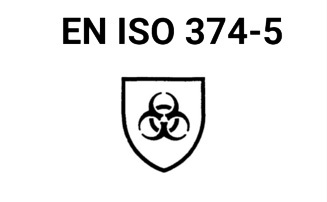 Symbol Designating Gloves with Fungi and Bacteria Resistance | 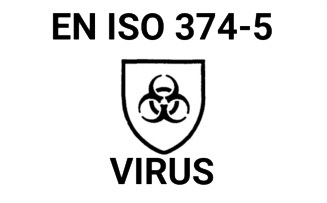 Symbol Designating Gloves with Fungi, Bacteria and Viral Risks |
| Buy EN 374-5 Gloves |
ALL YOUR QUESTIONS ON EN 374 ANSWERED
Below are the questions that we get from customers most often regarding EN 374.
How Do I Know What Chemicals I Can Use a Glove With?
The below symbol can be found on the conformity statement or on the back of your gloves. The letters beneath the symbol allow you to identify which chemicals you can use the gloves, and you can find out which chemicals are relevant via the Chemical Resistance Guide.

The letters allow you to identify which chemicals you can use the gloves with
How Do I Know How Long the Gloves Will Stay Chemical Resistant?
In the image above you can see that those gloves achieve a Type A status. Gloves can either achieve Type A, B or C, something you will be able to identify via the symbol either on the gloves on the case or on the supplied conformity statement. The different types stand for:
- Type A: Protective glove with permeation resistance of at least 30 minutes with at least six test chemicals
- Type B: Protective glove with permeation resistance of at least 30 minutes with at least three test chemicals
- Type C: Protective glove with permeation resistance of at least 10 minutes with at least one test chemical
Do All Gloves Have a Level of Chemical Resistance?
No, not all gloves have a level of chemical resistance. However, plenty do, and you can find niche chemical gloves in our list below:
- Anti Static Chemical Gloves
- Cut Resistant Chemical Gloves
- Glass Handling Chemical Gloves
- Oil Resistant Chemical Gloves
- Nitrile Chemical Gloves
Can Disposable Gloves Be Chemical-Resistant?
Yes, we sell plenty of chemical resistant disposable gloves. They are most common in Nitrile, as nitrile tends to be better resistant to chemicals, oils, waters and grease.
How Safe Are EN 374 Rated Gloves?
EN 374 gloves can be trusted because they are certified by an independent European body that was set up by the European Union to ensure a high standard in glove safety. The standards are back up by strong and resilient tests that are among the most intrusive in the world, meaning that the end results are as strong as you can expect them to be.
Where Can I Buy an EN 374 Rated Glove?
Here at SafetyGloves.co.uk we sell a wide range of Chemical Resistant Gloves. Alternatively, you can view our Chemical Resistant Guide Below:
| Buy Chemical Gloves |
Buy the Right EN 374 Gloves
We hope that this guide has given you a better idea of the type of EN 374 Gloves that are ideal for you. It's important to take your time, as a mistake in purchase can mean that you end up with gloves that are resistant to an irrelevant chemical.
Have any questions, or anything to add? Tell us in the comments below, or find us on Facebook and Twitter!

